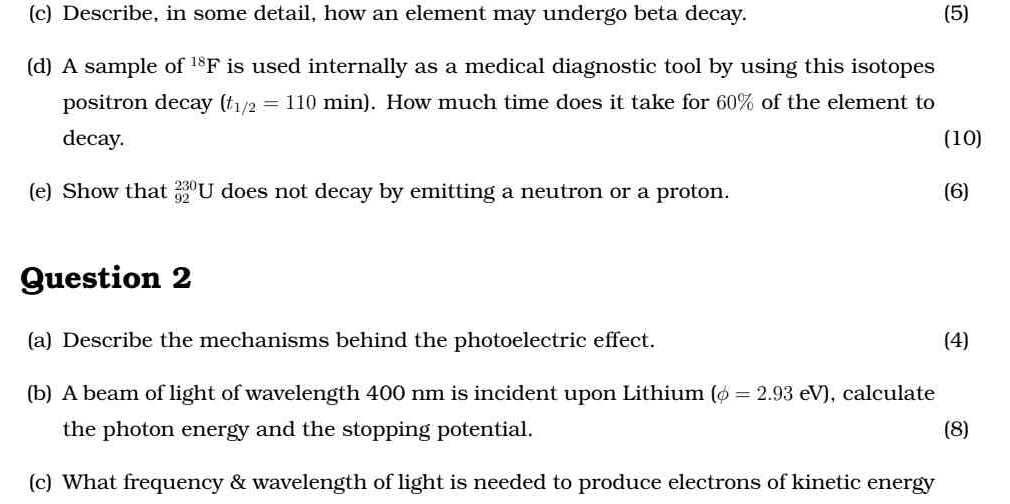(c) Describe in detail how an element may undergo beta decay. (d) A sample of 18F is used as a medical diagnostic tool using positron decay (t1/2 = 110 min). How much time does it... (c) Describe in detail how an element may undergo beta decay. (d) A sample of 18F is used as a medical diagnostic tool using positron decay (t1/2 = 110 min). How much time does it take for 60% of the element to decay? (e) Show that 230U does not decay by emitting a neutron or a proton. (a) Describe the mechanisms behind the photoelectric effect. (b) A beam of light of wavelength 400 nm is incident upon Lithium (φ = 2.93 eV), calculate the photon energy and the stopping potential. (c) What frequency & wavelength of light is needed to produce electrons of kinetic energy.

Understand the Problem
The questions are asking for explanations and calculations related to nuclear decay and the photoelectric effect. Specifically, the user needs to describe beta decay, compute the decay time for a specific isotope, demonstrate a property of Uranium-230, and discuss the photoelectric effect mechanisms and related calculations.
Answer
174.24 minutes
60% of 18F decays in approximately 174.24 minutes.
Answer for screen readers
60% of 18F decays in approximately 174.24 minutes.
More Information
Fluorine-18 is commonly used in PET scans due to its positron emission, which helps map physiological functions.
Tips
Ensure the correct use of logarithms when converting decay percentages to time.
Sources
- Does fluorine-18 undergo positron decay? - Socratic - socratic.org
AI-generated content may contain errors. Please verify critical information